By Commander William L. Murphy, USN (Ret.) From Naval Aviation News December 1981 “Comes now into the Domain of Poseidon a new winged Navy vehicle with unsurpassed dash, elusiveness and lethal power…” So read the certificate presented to those naval aviators who have qualified in the P6M Seamaster, the world’s first multijet flying boat. I
By Commander William L. Murphy, USN (Ret.) From Naval Aviation News December 1981
“Comes now into the Domain of Poseidon a new winged Navy vehicle with unsurpassed dash, elusiveness and lethal power…”
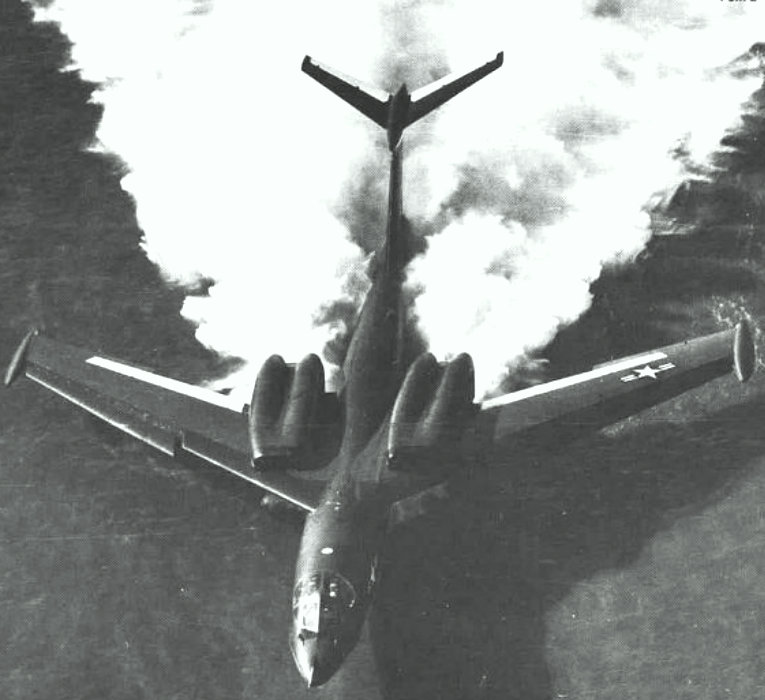
So read the certificate presented to those naval aviators who have qualified in the P6M Seamaster, the world’s first multijet flying boat. I was the fifteenth to have done so. With Bob Turner, chief experimental test pilot of the Martin Company, as pilot I had flown copilot on four test flights in this rather spectacular aircraft.
That was back in 1959 but my recollections of the Seamaster are still vivid. Powered by four J71 Allison turbojet engines equipped with afterburners, the 166,000-pound, 134-foot –long P6M was one of the largest seaplanes ever built. With wings swept back at a 40-degree angle, wing tip floats and high “T” tail, the Seamaster was a trim-looking airplane. The long slim fuselage was a new departure in seaplane hulls, designed to give the P6M better rougher water handling characteristics than previous seaplanes.
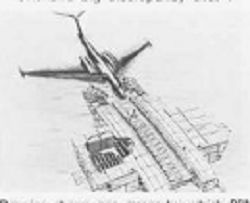 Conceived as a high-speed mine-layer, the Seamaster carried 30,000 pounds of droppable stores which were dispensed through a special rotating mine door. The weapons delivery capability had been of more than just academic interest to me at the time, for I had just been assigned to help Lieutenant Jim Campbell (Armament Test P6M Project Officer) on the P6M project when the Seamaster arrived at the Naval Air Test Center, Patuxent River, MD., for Navy acceptance trials. Jim’s job was to determine whether the P6M was capable of doing its job: whether the elaborate navigation equipment was accurate; whether all of the various mines and bombs could be carried and successfully dropped from the rotating mine door. In short, he was to determine that all of the armament was suitable for fleet use.
Conceived as a high-speed mine-layer, the Seamaster carried 30,000 pounds of droppable stores which were dispensed through a special rotating mine door. The weapons delivery capability had been of more than just academic interest to me at the time, for I had just been assigned to help Lieutenant Jim Campbell (Armament Test P6M Project Officer) on the P6M project when the Seamaster arrived at the Naval Air Test Center, Patuxent River, MD., for Navy acceptance trials. Jim’s job was to determine whether the P6M was capable of doing its job: whether the elaborate navigation equipment was accurate; whether all of the various mines and bombs could be carried and successfully dropped from the rotating mine door. In short, he was to determine that all of the armament was suitable for fleet use.
In order to be better prepared for the P6M on its scheduled arrival at the Naval Air Test Center later that year, several Navy test pilots participated in the Martin Company’s test program. As Jim’s assistant on the project at Armament Test, I went to Martin’s Strawberry Point test facility near Baltimore for a week to fly the Seamaster.
Walking out to the airplane for my first flight, I was impressed by the size of the bird. The Seamaster sat on its specially designed breaching vehicle, its tail 37 feet high, its cockpit about 16 feet above the ground. Since I had just spent several weeks flying the Navy’s smallest operational jet, the Douglas A4D Skyhawk, the 102–foot-wingspan Seamaster loomed monstrous by comparison. Entering the hatch on the port side of the fuselage, I noticed the folding anchor secured to the bulkhead, something I had not seen in an airplane for quite a while. Immediately aft were two crew stations, and forward was the cockpit.
Back in my patrol squadron day, I had thought that the PB4Y-2 Privateer was a big airplane at 65,000 pounds, but this Seamaster was bigger in every respect. Well, almost. The crew of the Seamaster was made up of only four men—normally a pilot, a copilot, a radio operator, and navigator—while tin Privateers we had a crew of 10. The navigator performed double duty as navigator–bombardier. For test work, however, a flight test engineer rode the navigator’s position. The airplane was highly instrumented and telemetering equipment would transmit information to the ground station for immediate evaluation as we flew.
After starting the J71s we left the parking line and taxied toward the seaplane ramp. For ground operation the P6M employed a unique beaching cradle which made taxiing very similar to that experienced in an airplane with conventional landing gear. Hydraulic hoses connected the brakes of the beaching vehicle to the aircraft controls. After power was added to start rolling , idle RPM was sufficient to keep the big plane moving.
Once over the ramp and into the water of Middle River, the beaching vehicle was released, and the Seamaster became a true seaplane. The combination speed brakes used in flight and hydro flaps for use at slow speeds in water made directional control while waterborne much simpler than in seaplanes I had flown before. The hydro flaps could be used simultaneously to slow the airplane or individually for directional control.
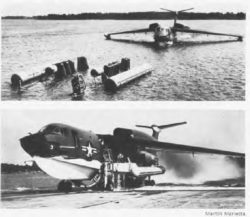 In contrast to the high position of the cockpit when on the ramp, I felt like we were submerged when we were on the water, although the cockpit was still about six feet above the surface.
In contrast to the high position of the cockpit when on the ramp, I felt like we were submerged when we were on the water, although the cockpit was still about six feet above the surface.
The crash boats had swept the area and we cleared for takeoff. The afterburner circuits were armed, the airplane turned into the wind, and Bob pushed on all four throttles. My job was to monitor the power and put the flaps down at about 80 knots.
As power was applied, the P6M was an impressive sight to see. The jet blast threw up a cloud of spray that completely hid the hug “T” Tail, the nose of the airplane rose, and the wing tip floats cut through the water. However, none of this was visible from the cockpit—it happened about 65 feet behind us. As “hump” speed was reached, about 80 knots, the nose came back over, and I put the flaps down. At 145 knots, we broke free of the water.
Although I later had several opportunities to control the airplane on the water at these speeds, I never ceased to be impressed. Doing 145 knots on a nice smooth concrete runway is one thing—145 knots on choppy water is another.
As we headed out towards the test area, the Atlantic off Assateague Island, I had an opportunity to get the feel of the Seamaster. The hydraulically powered controls, while not as light as a fighter, were not unduly heavy. Control response was remarkably quick for such a big airplane.
The instrument panel was conveniently laid out, with engine instruments grouped together between the pilot’s and copilot’s flight instruments. On the overhead, the fuel control panel switches were so arranged that white lines showed the path of fuel from the tanks to the engines. Lights, radios, air conditioning, and similar switches were distributed between the pilot’s and copilot’s console panels. The ejection seat was comfortable, and there was plenty of leg room for even a tall person like me.
 The one big discrepancy that I noticed was the poor visibility during turns. Although better than most transport airplanes, the P6M-1 Seamaster was a little shy on windshield area for a tactical airplane. This discrepancy was recognized by the Martin company and the P6M-2 version of the Seamaster had large plexiglass areas overhead, giving visibility similar to jet fighters.
The one big discrepancy that I noticed was the poor visibility during turns. Although better than most transport airplanes, the P6M-1 Seamaster was a little shy on windshield area for a tactical airplane. This discrepancy was recognized by the Martin company and the P6M-2 version of the Seamaster had large plexiglass areas overhead, giving visibility similar to jet fighters.
Once in the test area, a Martin test pilot in a Grumman F11 chase plane joined on us. His job would be to observe the rotation of the mine bay door, and watch the dropping of the 30,000 pounds of mines. Contact was made with “Adrift Base,” Armament Test Base Radio, and clearance to drop the stores was received.
A high-speed, low-level pass over the area showed that it was clear to drop the mines. Actually they were inert stores, but with the exact weight, shape, size, and center of gravity of the actual weapons that they simulated. At a speed of about 500 miles per hour the mine bay door was rotated. A slight vibration could be felt throughout the airplane but not anymore than expected.
“Mines away!”
The door rotated shut. It was a good drop. All of the mines fell cleanly away just as they were supposed to fall. High airspeeds at low levels can give disturbing airflow patterns around airplanes, which cause trouble in the separation of droppable stores. This successful drop was quite a milestone.
Another successful flight, which checked an important data off the long list that any new airplane must complete, started out very unpretentiously, and ended very undramatically.
Although the sky was clear, the surface visibility as we taxied out was about three miles. When we arrived in the seaplane area it was obvious that we would have to wait for an increase in visibility to comply with the stringent weather restrictions that the test operations were under. In order to conserve fuel, Bob Turner secured the engines. An auxiliary power unit in the after end of the airplane was remotely turned on to provide power for the radios. As we sat, weather cocked into the wind, gently bobbing up and down, one of Martin’s crash boats came alongside to offer us some coffee and doughnuts. A coffee break in the middle of the Chesapeake Bay. I could learn to like it.
The visibility finally came up to the necessary five miles. Bob fired up the J71s and within minutes we were airborne. A quick turnaround and we were in a position for an approach for an overload high-gross-weight landing at 165,000 pounds. This could put a lot of strain on important structural members. Seconds later, we were coming to a stop on the water as uneventfully as a duck returning to a mill pond.
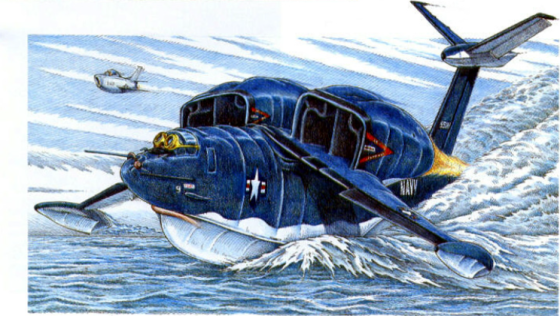 The visibility had gone back down and Bob decided to return to the hangar. After almost four hours in the airplane we taxied back up the ramp at Strawberry Point.
The visibility had gone back down and Bob decided to return to the hangar. After almost four hours in the airplane we taxied back up the ramp at Strawberry Point.
On another flight, while on a high-speed taxi run, to get the feel of the water-handling characteristics, I suddenly realized that looming up almost directly ahead of me were two large poles. We had been in the same area of the bay only a few days before and it had been clear.
Some fisherman had apparently stuck two poles into the bottom, about 50 feet apart, to mark his traps. Extending about 10 feet out of the water, they were probably a little too high to go under the wings. I shoved in on the rudder to try to turn but, at 130 knots on the water, we veered only a few degrees. To cut back on the power would have been unwise, because we could not have stopped before reaching the poles and we would have only settled lower in the water and hit both poles for sure.
Right between the poles! Apparently we had missed them—or so I thought at the time. Later on the ramp, the evidence was plain. A long scratch from the leading to the trailing edge of the right wing about 30 feet outboard of the fuselage. There was a small hole in the leading edge of the wing.
I remembered other days in other seaplanes—hours spent circling or tied to a buoy, waiting to be pulled up the ramp by a beaching crew with their heavy equipment. By comparison, the process of getting the Seamaster out of the water onto the parking apron when a flight was over was simple. Although the Seamaster was designed to “live” on the water, and not require beaching for long periods, the test airplanes were normally taken out of the water each day. As the ramp area was approached, the pilot spotted his beaching vehicle, moored nearby so he could taxi right into it. A hook on the underside of the airplane trapped a cable, and the vehicle clamped onto the airplane. A flight crew member attached the hydraulic lines and the Seamaster taxied up the ramp under its own power.
Although it was the latest and best of a long line of Navy seaplanes, the P6M Seamaster lost out to the advancing technology—Polaris missiles and nuclear-powered submarines, A3J Vigilantes and F4H Phandtom IIs—and to budgetary constraints. Modern weapons are expensive and the funding level demanded hard decisions. Something had to go. There are a lot of people who are sorry that it was the P6M Seamaster.
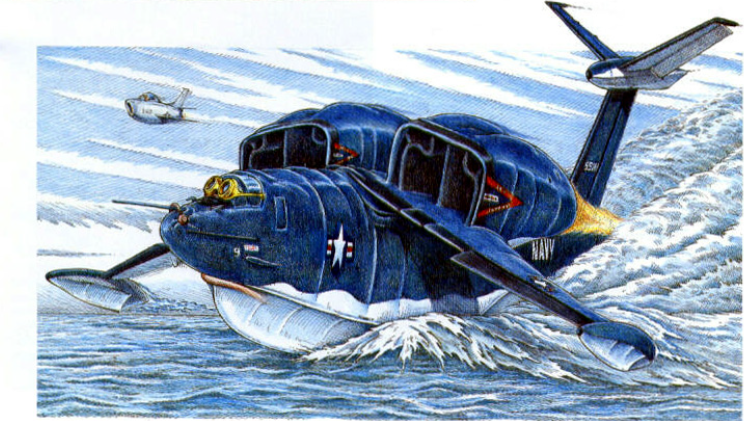
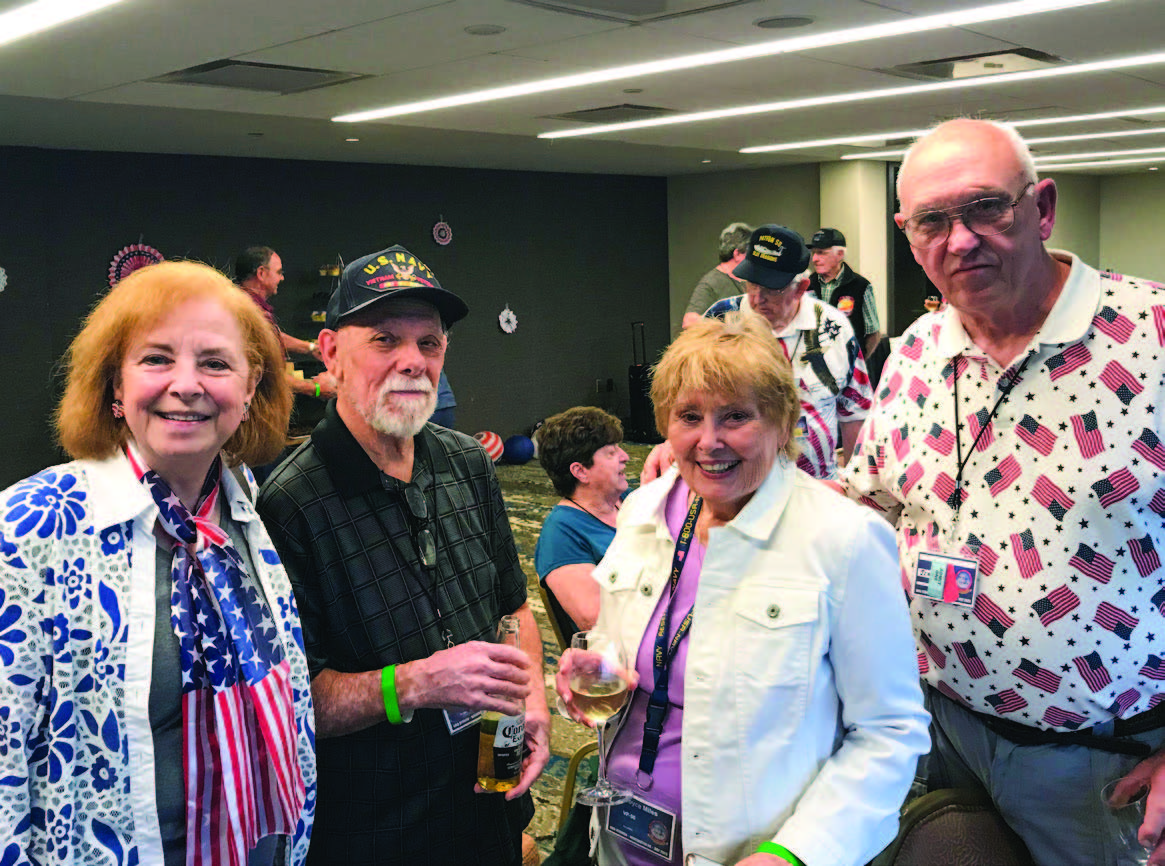
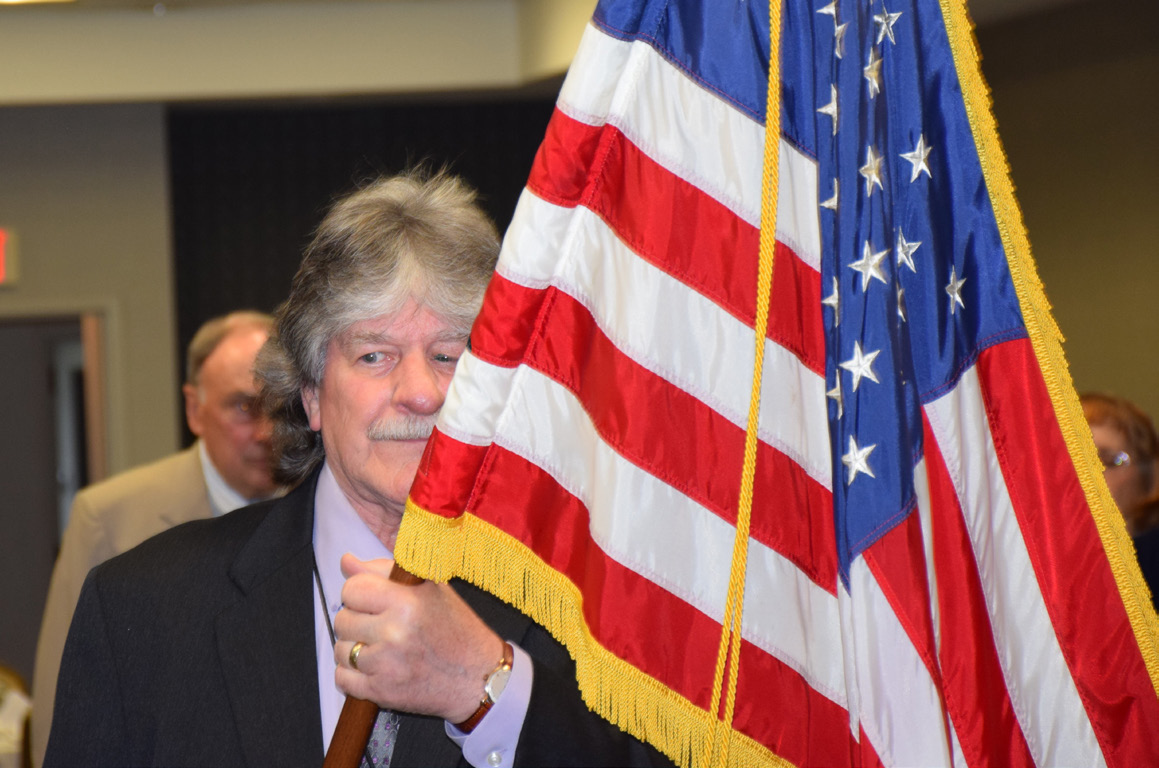
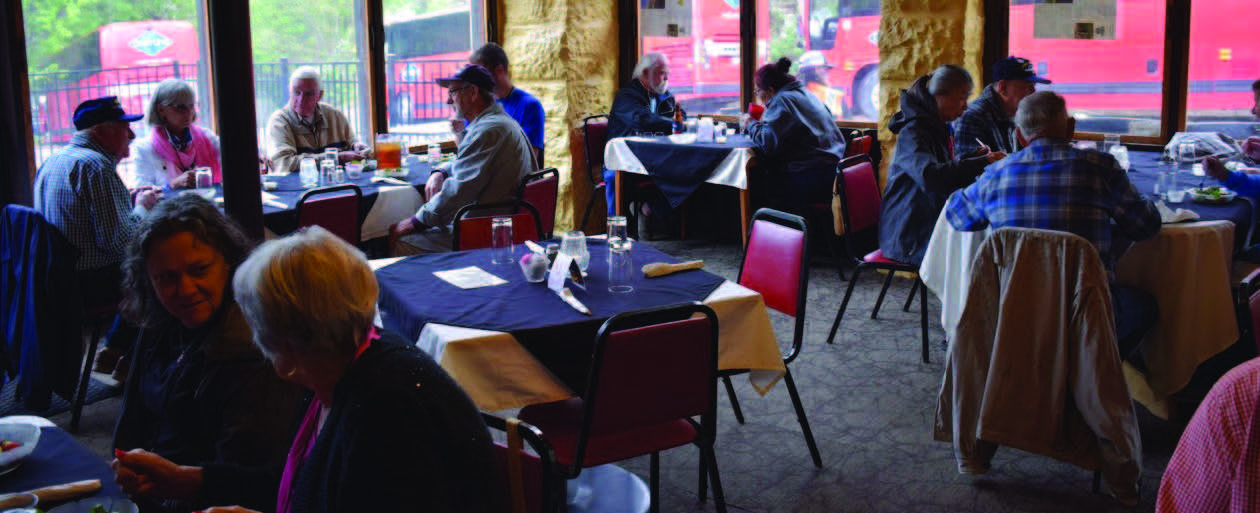

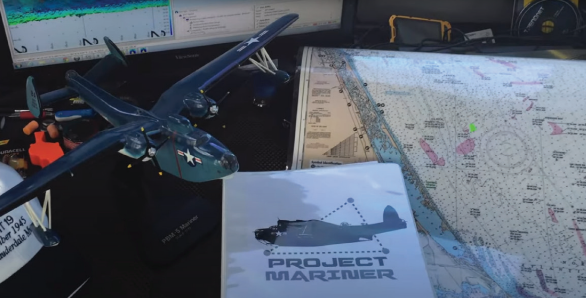

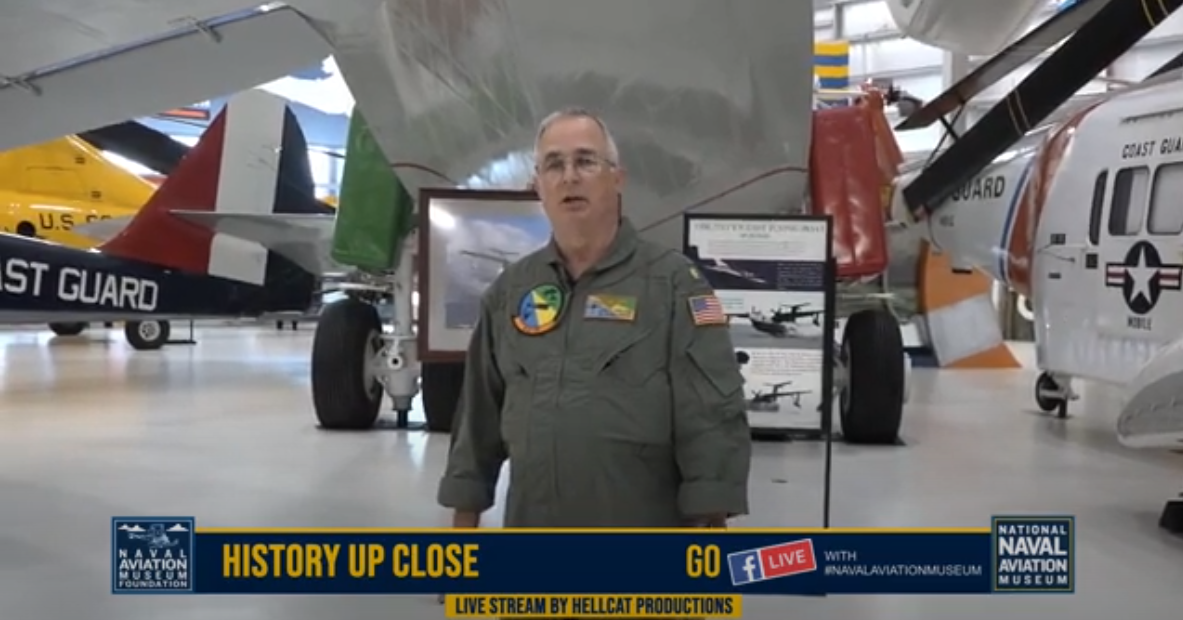
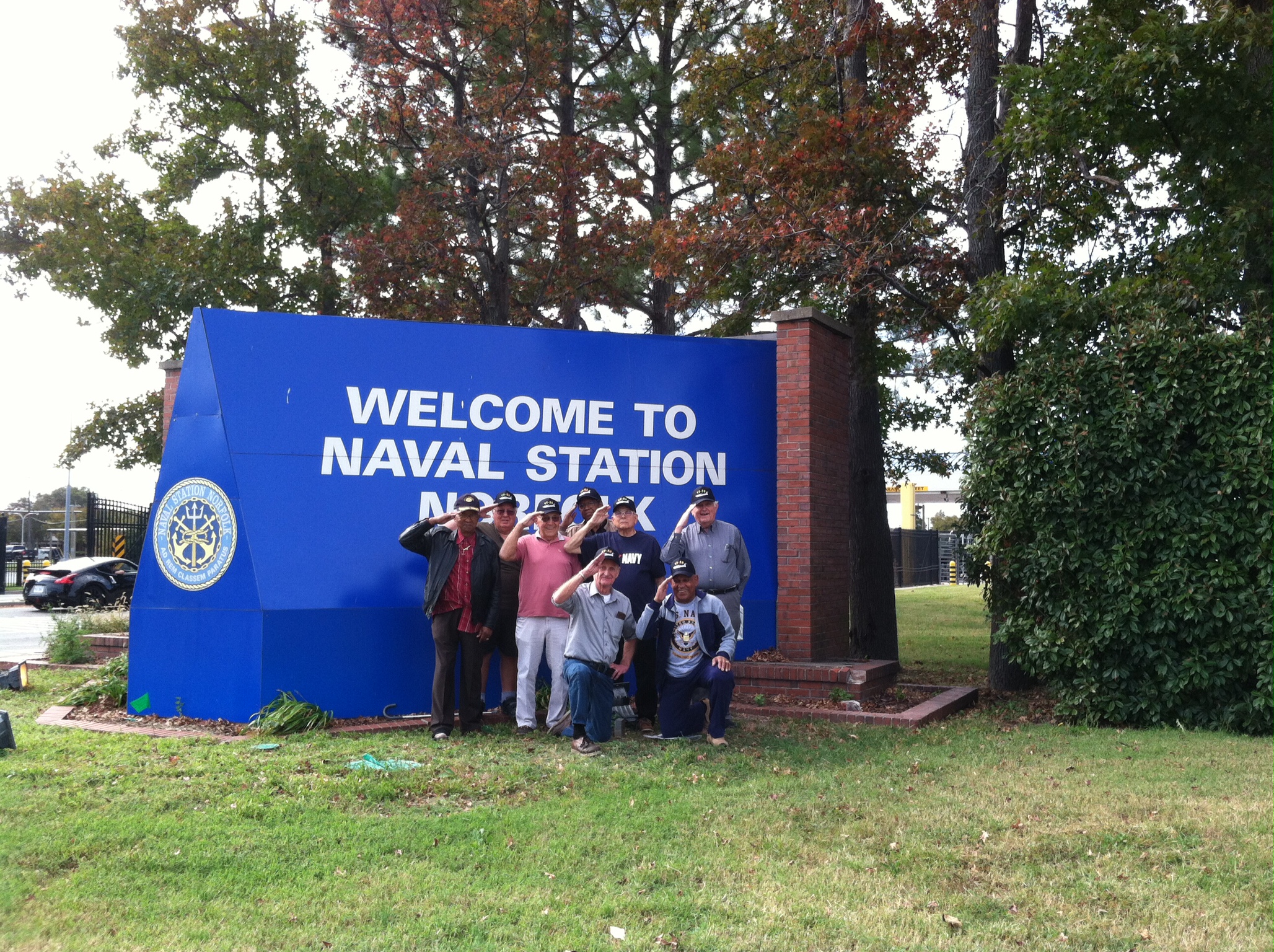
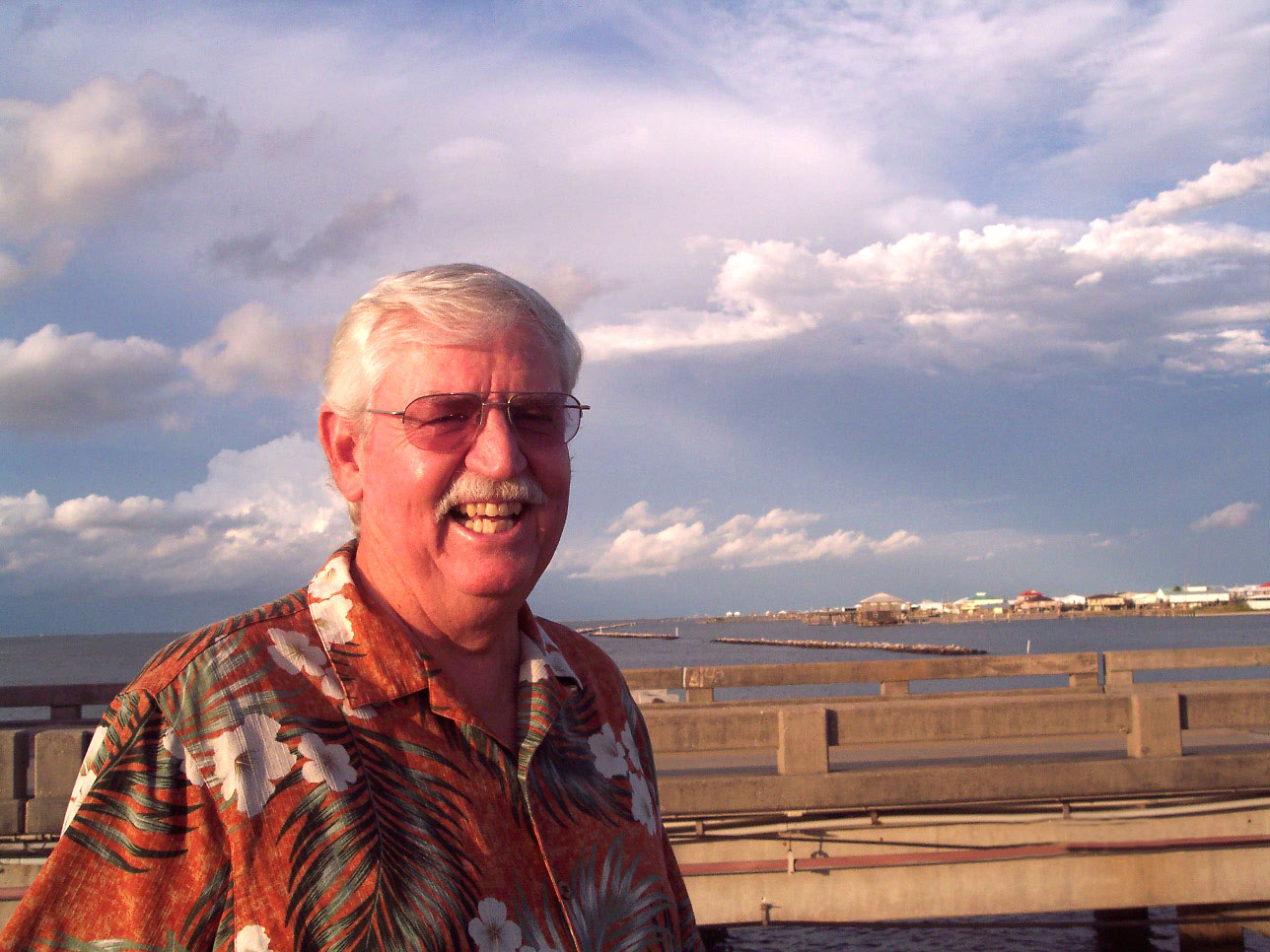
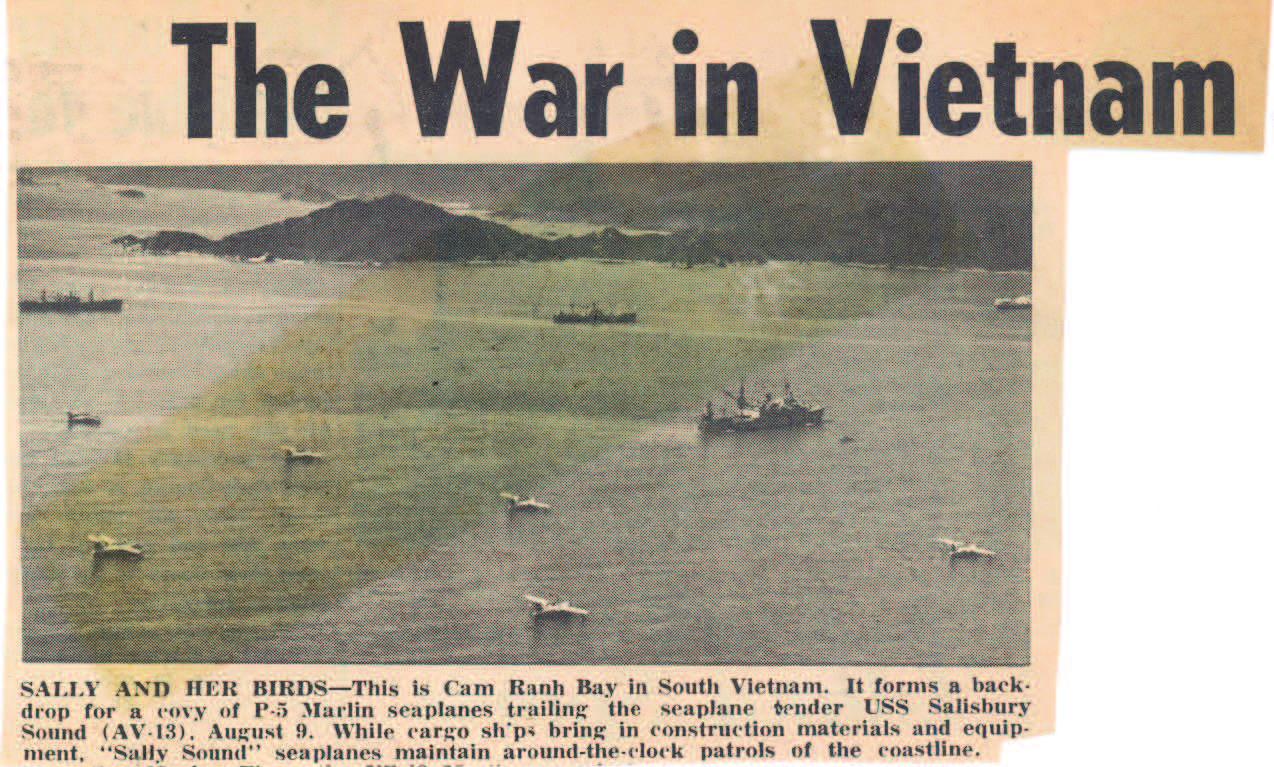
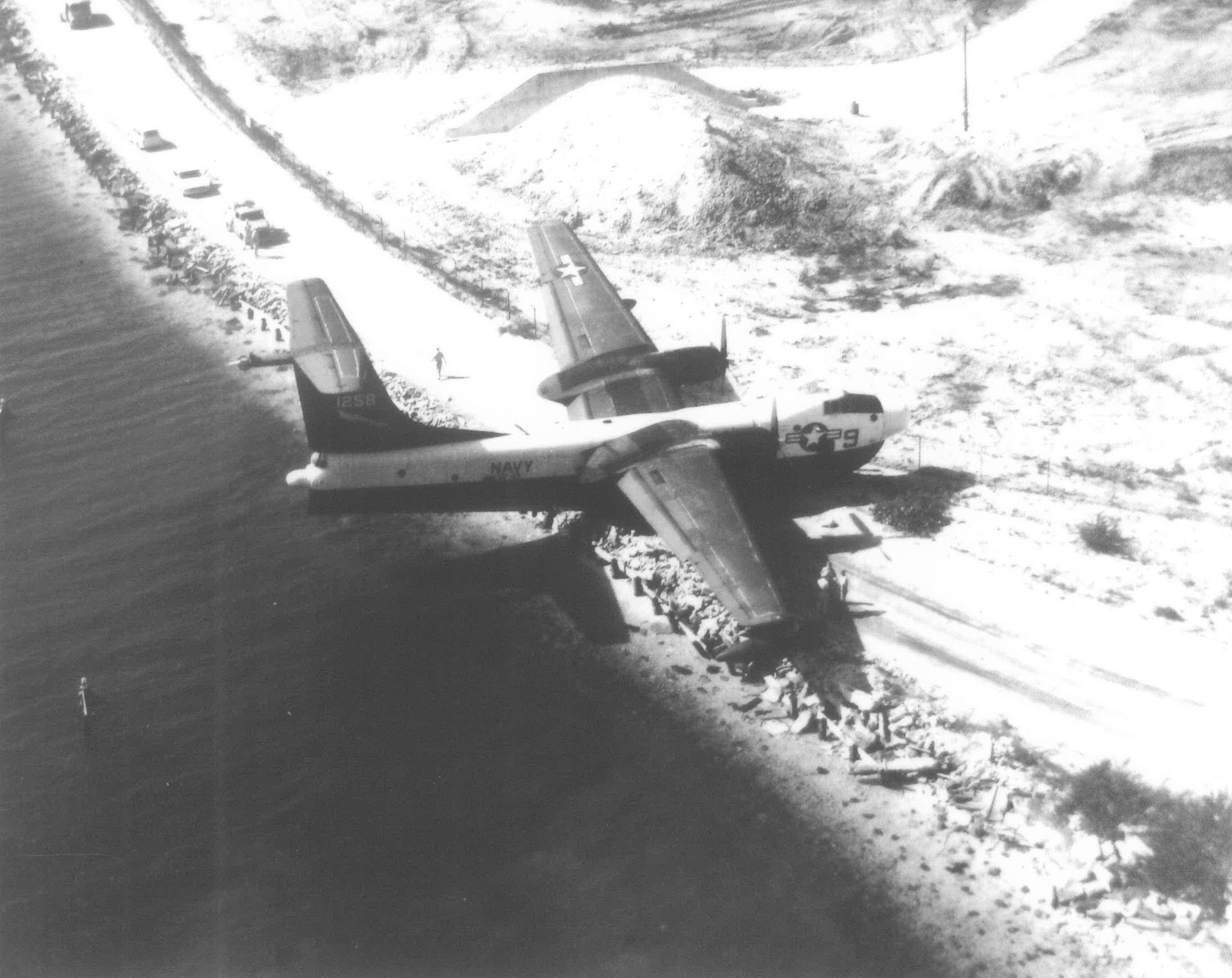
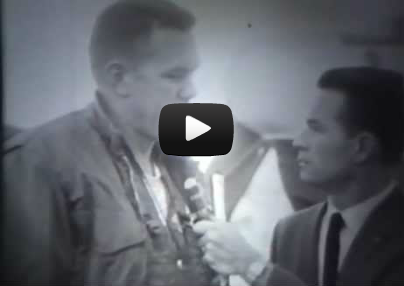
3 Comments
Nick Mulich
December 13, 2016, 16:52I was at Service Test from 58-60, there were several people in the AE shop that had been on the P6M project. They were looking forward to getting it at Pax River. Were quite disappointed when it was scratched.
REPLYLisa Murphy
January 25, 2018, 08:02Thanks for posting this. Cmdr Murphy was my father. I remember learning to sail in the sea plane cove at Pax River in the mid 1960s (I was a very “mere” child) and there were a couple of the P6Ms parked on the ramp. I remember that he had written this article but I couldn’t find it, so thank you for reprinting it.
REPLYJames Murphy
January 25, 2018, 09:37I was shipboard in San Diego. We lived in an apartment up on State Street and overlooked Lindberg Field and the bay. I saw more than one experience of the Seamaster as it taxied, flew and land in the harbor.
REPLY